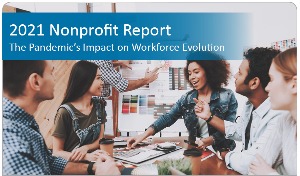
Question: What are some typical examples of employee discipline? Are there any you recommend?
Answer: Discipline should reflect the severity of the behavior, attempt to correct it, and be applied consistently. You’ll want to consider how you addressed certain behaviors in the past and the precedent you want to set for the future. For instance, if you jump straight to a final warning when a certain employee is an hour late to work, but let another employee come in late regularly without so much as a written warning, you’re setting yourself up for trouble.
We generally recommend progressive discipline. This means you start small and work your way up to termination. Progressive discipline often includes these steps:
At each step, make your expectations clear, notify the employee of the consequences if they fail to improve (that they’ll be one step closer to termination), and document what actions you took. The warnings you give to the employee should stick to the facts, i.e., what infraction was observed, when it occurred, and what policy or policies were violated. Opinions about the infraction should be left out, as these are easily disputed. For example, “Yesterday, you arrived 20 minutes late in violation of our attendance policy” simply states the facts, whereas “You’re always tardy and can’t be trusted to arrive on time” is likely to get pushback.
Q&A provided by Mineral, powering the UST HR Workplace for nonprofit HR teams. Have HR questions? Sign your nonprofit up for a free 60-day trial here. As a UST member, simply log into your Mineral portal to access live HR certified consultants, 300+ on-demand training courses, an extensive compliance library, and more.

A strong leadership team is vital to the success of any nonprofit organization—without it you risk reduced productivity, delayed decisions, and low morale. Rooted in the ability of a nonprofit to maintain sustainability, having a leadership succession plan in place is vital to organizational success.
Don’t miss your chance to download a free copy of UST’s latest Employer Guide, 3 Vital Steps for Developing a Durable Nonprofit Leadership Team, to discover strategies that can help identify (and develop) tomorrow’s leaders with training opportunities designed to strengthen your brand and build resilient teams. In this eBook, you’ll discover:
The consequences of insufficient leadership can be devastating to an organization. Safeguard your nonprofit and its mission by reinventing your organizational leadership strategy—minimizing the threat (and high cost) of turnover.

Flexible work arrangements have been around for decades but now that we’re beginning to see the new era of work take shape it’s more important than ever to support and manage remote teams in a way that allows them to work effectively from home—ensuring sustainability of day-to-day operations. Managing employees without daily face-to-face interaction has its own unique set of challenges but when leaders focus their skills on the right set of best practices employees—and organizations—can excel.
Being proficient at managing remote employees requires strong communication skills, reachability, positive reinforcement, flexibility, and empathy. Productivity is no longer based on “desk time” and visible activity, managers must now gauge success based on outcomes and revise how they lead their people while finding new ways to keep them engaged.
Implement these best practice tips to improve morale, productivity, and engagement.
There are many ways to develop better relationships with a remote team that include transparent communication, open doors, and clear expectations to name a few. Micromanaging employees has never been a favorable practice and can cause undue stress for employees—leaving them to feel like they’re not trusted to do their work. While these best practice tips require time, attention, and consistency, they can help to develop healthy habits that allow your team to maintain productivity and achieve goals.

As employers continue to strategize for the future—paving the way for flexible work models and creative retention tactics—many are seeing permanent change take place. UST surveyed more than 400 nonprofit leaders from across the U.S. to uncover the latest sector trends caused by the pandemic and created the 2021 Workforce Trends Infographic.
Download your free copy today to get a sneak peak at what your nonprofit peers had to share about their top workforce issues, COVID’s impact on staffing levels and more.
For only $99, you can also download a copy of the complete 2021 Nonprofit Sector Report to uncover valuable insight on how nonprofits continue to navigate the ongoing challenges that have risen throughout the pandemic.

Question: Generally, our employees are “always on,” meaning they check work emails and communicate with co-workers/supervisors via smartphone during all hours. However, some of our employees are beginning to feel overwhelmed. Any suggestions?
Answer: Although employers may see the “always on” employee as highly productive, the constant state of being readily available can leave employees feeling overwhelmed and exhausted. To combat this struggle, employers may:
Note: The application of any new or existing workplace policy must be applied consistently and without discrimination throughout the workforce.
Q&A provided by Mineral, powering the UST HR Workplace for nonprofit HR teams. Have HR questions? Sign your nonprofit up for a free 60-day trial here. As a UST member, simply log into your Mineral portal to access live HR certified consultants, 300+ on-demand training courses, an extensive compliance library, and more.

Hiring new employees can be time-consuming, costly, and stressful. Pre-employment assessments can be useful in determining whether or not a potential new hire is a good fit candidate—with the right skills and mind set for your organization. A proven, scientific way to screen candidates and mitigate the risks of hiring mistakes, incorporating pre-employment testing can be the most effective way to gain a more thorough picture of a candidate’s strengths, skills and personality.
As we know, people-related risks within an nonprofit organization can range from bad hires and misconduct to harassment and lack of diversity in the workplace. To help nonprofit employers strengthen their employee risk management practices—and mitigate the risks that can ultimately affect your bottom line—we created the 2021 People Risk Management Toolkit.
This toolkit includes a performance improvement plan, a risk audit questionnaire, risk management best practice tips and more:
Take the time to thoroughly vet your candidates before hiring. The cost of pre-employment screening is minimal compared to the cost of hiring someone who doesn’t stay. Not to mention, that an employee who isn’t a good fit—for the job or your workforce—can also impact the entire team and overall morale.
If you’re looking for access to more HR-specific articles, templates and checklists? Sign up for a FREE 60-Day Trial of UST HR Workplace today! You’ll also gain access to live HR certified consultants, 300+ on-demand training courses and an extensive compliance library.

Nonprofit employers nationwide are living through a fundamental transformation in the way they work and the pace at which employee priorities are changing. In the latest rendition of UST Live, we were joined by leaders from across the U.S with expertise in nonprofit management to discuss innovative strategies for creating a forward-looking workplace culture that is flexible, inclusive, and resilient.
Watch now to discover:
Upcoming UST Live Webinars: UST Live was designed to equip nonprofit leaders with strategies that can help sustain their workforce and their mission-driven initiatives. In our final session of the year—scheduled for early December—we’ll discuss nonprofit leadership and succession planning.

Are you curious to discover how nonprofits have pivoted strategies in response to COVID-19 and how this pandemic is causing permanent change across the sector? With over 400 survey respondents—representing a wide variety of nonprofits from across the U.S.—this report unveils the pandemic’s impact on workforce evolution and illustrates how the sector withstood the hardships caused by the crisis.
Download the report to learn:
This report will provide valuable insight on how nonprofit organizations are navigating the ongoing challenges that have arisen throughout the pandemic. For only $99, download your copy of the 2021 sector report today!

Question: Can we require remote employees to have childcare?
Answer: We do not recommend having a policy that stipulates childcare is necessary. For one thing, in practice, it often isn’t necessary. Lots of employees are able to do their jobs just fine while supervising children in the home. Imposing this requirement (and a huge financial burden) won’t solve any problems, but it may encourage remote employees to start looking for a new job. Even in cases where supervising children does negatively affect job performance, requiring childcare as a solution could be seen as crossing a line into your employees’ personal lives.
Instead of requiring childcare, we recommend setting clear expectations for attendance, availability, performance, and productivity. You can then discipline employees who don’t meet these expectations without giving the impression that you’re micromanaging their personal lives.
It’s also worth keeping in mind that employee expectations around remote work have changed. People choose remote work with the idea that they’ll have more flexibility during the day to attend to their personal responsibilities. If that flexibility isn’t an option, it’s important to make that clear so employees know what to expect.
Q&A provided by Mineral, powering the UST HR Workplace for nonprofit HR teams. Have HR questions? Sign your nonprofit up for a free 60-day trial here. As a UST member, simply log into yourMineralportal to access live HR certified consultants, 300+ on-demand training courses, an extensive compliance library, and more.

Risk management is defined as a discipline for dealing with the possibility that some future event will cause harm and nonprofit risk comes in an endless number of forms—data security, fundraising fraud, regulatory compliance, employee relations, volunteer staff, and theft just to name a few. Given the myriad of ways that nonprofits are changing the world and the impossible task of being able to predict every potential mission-disrupting event, every organization stands to benefit from risk reducing tactics. This is where risk management comes in—an essential necessity that helps nonprofits understand the threats they face and how to prioritize strategies that create sustainability in the future.
Developing a risk management process is essential to every nonprofit but many remain unprotected simply because they don’t have the funds or resources to implement such a strategy. There are however other ways to protect your organization without breaking the bank that just require more time and dedication to create and streamline. So, if you don’t have a risk management strategy in place already, now is the time to start.
Follow these four steps to create a risk management strategy:
A single liability incident can easily cost tens of thousands of dollars, not to mention the harm it can do to your reputation. In short, by taking the time to identify risks, prioritize issues, respond to the problems, assess the situation, and improve your strategy, nonprofit employers can better protect their assets and avoid future risks.

UST maintains a secure site. This means that information we obtain from you in the process of enrolling is protected and cannot be viewed by others. Information about your agency is provided to our various service providers once you enroll in UST for the purpose of providing you with the best possible service. Your information will never be sold or rented to other entities that are not affiliated with UST. Agencies that are actively enrolled in UST are listed for review by other agencies, UST’s sponsors and potential participants, but no information specific to your agency can be reviewed by anyone not affiliated with UST and not otherwise engaged in providing services to you except as required by law or valid legal process.
Your use of this site and the provision of basic information constitute your consent for UST to use the information supplied.
UST may collect generic information about overall website traffic, and use other analytical information and tools to help us improve our website and provide the best possible information and service. As you browse UST’s website, cookies may also be placed on your computer so that we can better understand what information our visitors are most interested in, and to help direct you to other relevant information. These cookies do not collect personal information such as your name, email, postal address or phone number. To opt out of some of these cookies, click here. If you are a Twitter user, and prefer not to have Twitter ad content tailored to you, learn more here.
Further, our website may contain links to other sites. Anytime you connect to another website, their respective privacy policy will apply and UST is not responsible for the privacy practices of others.
This Privacy Policy and the Terms of Use for our site is subject to change.
UST maintains a secure site. This means that information we obtain from you in the process of enrolling is protected and cannot be viewed by others. Information about your agency is provided to our various service providers once you enroll in UST for the purpose of providing you with the best possible service. Your information will never be sold or rented to other entities that are not affiliated with UST. Agencies that are actively enrolled in UST are listed for review by other agencies, UST’s sponsors and potential participants, but no information specific to your agency can be reviewed by anyone not affiliated with UST and not otherwise engaged in providing services to you except as required by law or valid legal process.
Your use of this site and the provision of basic information constitute your consent for UST to use the information supplied.
UST may collect generic information about overall website traffic, and use other analytical information and tools to help us improve our website and provide the best possible information and service. As you browse UST’s website, cookies may also be placed on your computer so that we can better understand what information our visitors are most interested in, and to help direct you to other relevant information. These cookies do not collect personal information such as your name, email, postal address or phone number. To opt out of some of these cookies, click here. If you are a Twitter user, and prefer not to have Twitter ad content tailored to you, learn more here.
Further, our website may contain links to other sites. Anytime you connect to another website, their respective privacy policy will apply and UST is not responsible for the privacy practices of others.
This Privacy Policy and the Terms of Use for our site is subject to change.